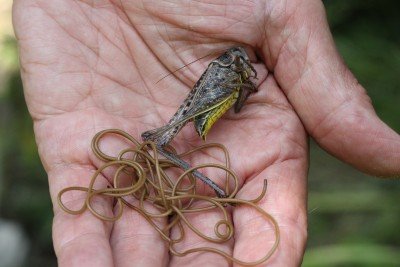
Wolf worms, often associated with their startling appearance and parasitic lifestyle, can indeed create waves in the local wildlife populations. Picture this: your backyard is a bustling city for wildlife, and wolf worms are like uninvited guests who can disrupt everything. In this article, we’ll explore how these worms impact our furry and feathered neighbors and what it means for the delicate balance of backyard ecosystems.
What Are Wolf Worms?
Let’s start with the basics. Wolf worms, also known as cuterebra larvae, are the larvae of botflies. They typically invade the bodies of small mammals, particularly rodents, rabbits, and sometimes even pets like cats and dogs. Once they find a host, they burrow into the skin, creating a unique and often alarming sight. Now, you might be thinking, “What do these worms have to do with my backyard wildlife?”
Here’s the thing: When these wolf worms invade local wildlife, it can lead to significant health issues for those animals. The larvae feed on the host’s tissue, causing inflammation, infection, and in severe cases, even death. This not only affects individual animals but can ripple through the whole ecosystem, especially if a crucial species is impacted. Imagine losing a whole population of rabbits or rodents; it could change who else shows up in your yard.
How Do Wolf Worms Affect Small Mammal Populations?
The main victims of wolf worms are small mammals that create a vibrant part of the backyard habitat. When wolf worms enter the picture, the effects can be quite serious. For instance, if rabbits become infested, their population numbers could drop—leading to less food for predators like hawks or foxes.
Think of the small mammals as the backbone of the ecosystem. They serve as both prey and pollinators, supporting larger animals and plants. A decline in their numbers means that other species will struggle, too. You might notice fewer birds, since they rely on those small mammals for food. It’s a domino effect; one small change can create large consequences.
The Ripple Effect on Predators
When wolf worms make themselves at home, it doesn’t just stop with the small mammals. Predators, like foxes and hawks, also feel the impact. If these predators rely on sick or weakened prey that are infected with wolf worms, they may not get the nourishment they need, which can lead to malnutrition or even starvation.
Picture a hawk soaring in the sky, searching for a meal. If fewer healthy rabbits are hopping around due to wolf worm infestations, the hawk’s chances of a successful hunt decrease significantly. This can result in lower birth rates for those hawks the following year, further impacting your backyard’s wildlife balance. The whole food chain is interconnected, and when one link weakens, others start to falter too.
How Wolf Worms Impact Bird Populations
Birds are another group that can be affected by wolf worms, albeit indirectly. Many birds feed on small mammals, so when those mammals are under threat from parasites, it becomes trickier for birds to find food. Additionally, birds that might pick off sickly animals could be exposing themselves to these parasites, risking their own health and populations.
For instance, suppose you’ve got a family of owls nesting in a tree in your backyard. If their primary food source—let’s say field mice—faces a population decline due to wolf worms, the owls may find it challenging to feed their chicks. This could lead to fewer owls surviving and breeding, making it a challenge for them to return next season.
Backyard Management and Prevention
So, what can you do about wolf worms if you’re concerned for your backyard wildlife? There are a few steps you can take to minimize the risk:
- Keep the area clean: Make sure to clean up any food scraps and debris that can attract rodents.
- Monitor pets: If you have cats or dogs that roam outside, keep an eye on them to ensure they aren’t picking up any unwanted visitors.
- Educate yourself: Learn about local wildlife and the signs of wolf worm infestation so you can catch it early if it happens.
Being proactive can help create a healthier environment for wildlife and mitigate potential issues caused by wolf worms.
The Role of Ecosystem Recovery
If you find wolf worms have made their way into your backyard, it’s important to remember that ecosystems can recover. Nature has a way of balancing things out, but it can take time. Here’s where patience and understanding come in.
Once the affected wildlife populations stabilize or recover, you may see a resurgence of the balance that once filled your yard with life. Depending on the extent of the impact, this can take multiple seasons. This is where community support and local wildlife conservation efforts can also play a role, helping to monitor and aid in the recovery process.
Final Thoughts on Wolf Worms and Wildlife
In conclusion, while wolf worms might seem like a niche issue, their impact can spread wide across backyard wildlife populations. They can weaken small mammals, disrupt predator dynamics, and create challenges for bird populations. If you’re invested in keeping a healthy ecosystem in your backyard, understanding the role of wolf worms is essential.
By keeping your space clean and monitoring local wildlife, you’re not just calling in the pretty birds and friendly rabbits; you’re also helping maintain a balance that benefits everyone involved—humans and wildlife alike. So, as you sip your coffee in the morning sun, enjoy the vibrant life around you and remember, every creature has a role in the story of your backyard.
